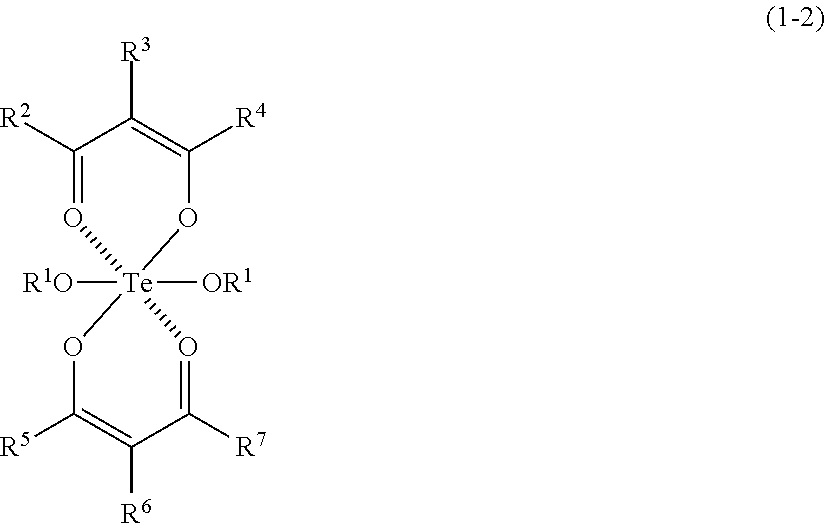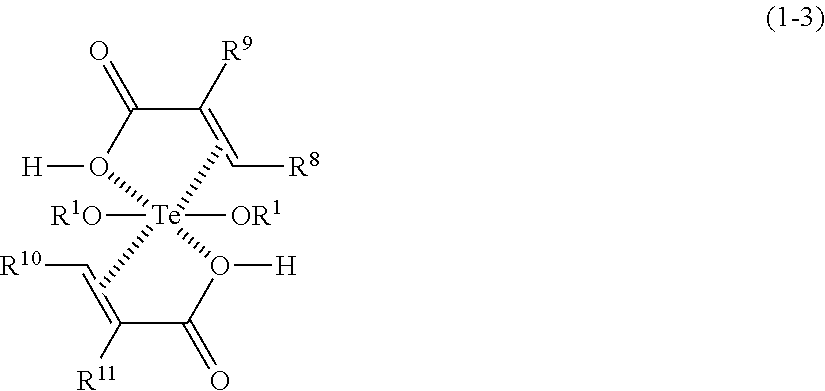Composition for resist underlayer film formation and pattern formation method
- Summary
- Abstract
- Description
- Claims
- Application Information
AI Technical Summary
Benefits of technology
Problems solved by technology
Method used
Image
Examples
production example 1
[Production Example 1] Synthesis of CR-1
[0161]A four necked flask (internal capacity: 10 L) equipped with a Dimroth condenser tube, a thermometer, and a stirring blade and having a detachable bottom was prepared. To this four necked flask, 1.09 kg (7 mol) of 1,5-dimethylnaphthalene (manufactured by Mitsubishi Gas Chemical Company, Inc.), 2.1 kg (28 mol as formaldehyde) of a 40 mass % aqueous formalin solution (manufactured by Mitsubishi Gas Chemical Company, Inc.), and 0.97 mL of a 98 mass % sulfuric acid (manufactured by Kanto Chemical Co., Inc.) were added in a nitrogen stream, and the mixture was reacted for 7 hours while refluxed at 100° C. at normal pressure. Subsequently, 1.8 kg of ethylbenzene (manufactured by Wako Pure Chemical Industries, Ltd., a special grade reagent) was added as a diluting solvent to the reaction solution, and the mixture was left to stand still, followed by removal of an aqueous phase as a lower phase. Neutralization and washing with water were further ...
production example 2
[Production Example 2] Synthesis of TOX-2
[0164]In a container (internal capacity: 100 mL) equipped with a stirrer, a condenser tube, and a burette, 1.0 g (2.8 mmol) of tetraethoxytellurium(IV) (a product from Alfa Aesar, purity: 85%) dissolved in 20 mL of tetrahydrofuran was placed, and 0.6 g (6.0 mmol) of acetylacetone dissolved in 5 mL of tetrahydrofuran was further added thereto. After refluxing for 1 hour, the solvent was distilled off under reduced pressure, thereby obtaining 0.6 g of a compound represented by the following formula (TOX-2).
[0165]The obtainment of the compound represented by formula (TOX-2) was confirmed by the 1H-NMR chemical shifts before and after the reaction.
TABLE 1Chemical shift (ppm)LigandProtonBefore reactionAfter reactionAcetylacetone—CH32.22.3—CH2—3.6Not observed(keto form)—CH═5.55.4(enol form)—OH15.8Not observed(enol form)
production example 3
[Production Example 3] Synthesis of TOX-3
[0166]In a container (internal capacity: 100 mL) equipped with a stirrer, a condenser tube, and a burette, 1.0 g (2.8 mmol) of tetraethoxytellurium(IV) (a product from Alfa Aesar, purity: 85%) dissolved in 20 mL of tetrahydrofuran was placed, and 0.8 g (5.6 mmol) of 2,2-dimethyl-3,5-hexanedione dissolved in 5 mL of tetrahydrofuran was further added thereto. After refluxing for 1 hour, the solvent was distilled off under reduced pressure, thereby obtaining 0.7 g of a compound represented by the following formula (TOX-3).
[0167]The obtainment of the compound represented by formula (TOX-3) was confirmed by the 1H-NMR chemical shifts before and after the reaction.
TABLE 2Chemical shift (ppm)LigandProtonBefore reactionAfter reaction2,2-Dimethyl-3,5-—(CH3)31.21.3hexanedione—CH32.12.2—CH2—3.7Not observed(keto form)—CH═5.75.6(enol form)—OH15.8Not observed(enol form)
PUM
 Login to View More
Login to View More Abstract
Description
Claims
Application Information
 Login to View More
Login to View More - R&D
- Intellectual Property
- Life Sciences
- Materials
- Tech Scout
- Unparalleled Data Quality
- Higher Quality Content
- 60% Fewer Hallucinations
Browse by: Latest US Patents, China's latest patents, Technical Efficacy Thesaurus, Application Domain, Technology Topic, Popular Technical Reports.
© 2025 PatSnap. All rights reserved.Legal|Privacy policy|Modern Slavery Act Transparency Statement|Sitemap|About US| Contact US: help@patsnap.com



